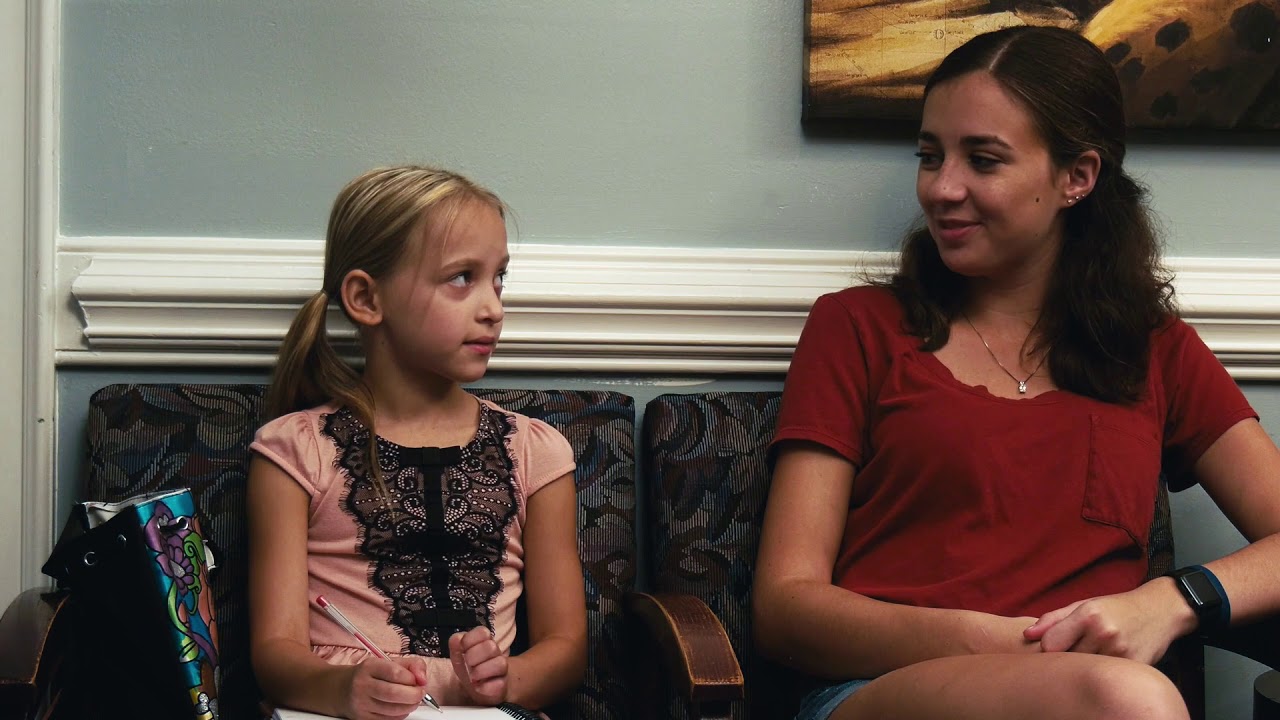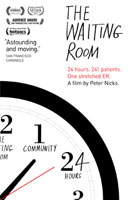We all know that the health care system in this country is in a pretty bad state. One could argue that ObamaCare is not at all the right way to fix this situation. Nevertheless, the existing system has too many flaws to ignore. There have been a variety of documentaries over the years that take a look at various aspects of United States health care. The Waiting Room takes a different approach in that it eliminates interviews with experts, stats/facts and even any structure to provide a low-level look at the events over 24 hours in a public hospital. As powerful as some of the images might be, the film really needs some of the structure and elements that the filmmaker eschewed to provide this realistic look at health problems in the lives of one segment of the population. Had those missing things been layered carefully, The Waiting Room would be a must-see documentary instead of the emergency room (ER) equivalent of the TV show Cops.
I don’t know the story behind the making of The Waiting Room. That is probably worth a short article on its own. For whatever reason, writer/director Peter Nicks obtained full access to the ER at Highland Hospital in Oakland, CA, for himself and his small crew. It appears that Nicks used one or two main cameras to follow the patients and staff and mounted some others for time-lapse photography and wide shots of the titular area. The hospital sees about 250 patients per day in the ER. Nicks filmed for 24 hours, during which 241 patients were treated or processed through the system. He only focuses on a few key cases and some of the staff members. I don’t know how Nicks was granted rights to use video of the patients given that they were there to get care instead of appearing in a film. I can only assume that they allowed him to film them and signed releases afterwards. They also could have had a standard warning notice on the door to the ER like you see at concerts that basically states that they’re filming on site and that you might appear on camera. In today’s world of cell phone cameras and security cameras on every street corner and in every business, most people understand that they’re filmed constantly over the course of their day.
Highland Hospital is a public hospital. It’s what’s known as a “safety-net hospital” that serves the poor, uninsured, underinsured and unemployed people who need some kind of medicine or health care and don’t have a regular doctor or clinic. You often hear the expression “fly on the wall” to describe an unnoticed, all-seeing perspective. That’s exactly the effect that Nicks manages to create. He flits back and forth from the waiting room to the examination rooms/beds to follow patients on their journeys. Some are quick visits in which patients need pills for diabetes or pain and don’t have a prescription program. Some are even quicker visits like the 15-year-old gunshot victim who is pronounced dead on camera and later transferred to the morgue. Other patients are featured in that they’re in the ER for many hours to deal with serious conditions. One little girl has inflamed/infected tonsils that make it hard to speak or swallow. Her parents are struggling to make ends meet and can’t afford proper health care. A young couple seeks help for the man’s cancer treatment after a transfer from a more prominent facility. Another man experiences constant pains that prevent him from doing his job of laying carpet without discomfort. He really needs an operation, but he doesn’t have the money for it.
It’s very interesting to watch this documentary, but it doesn’t go beyond that because it’s like watching an unedited reality show rather than a polished, professional film. The patients vary in their attitudes and responses from quite testy and violent to calm and resigned to their financial and medical situations. With no titles or helpful/descriptive text of any form, the names and faces of the patients and staff members go by quickly as their little dramas unfold. If there’s any “star” in the proceedings, it’s the nurse/receptionist in the ER who seems to work 12-hour shifts based on this filming day alone. She’s a feisty black lady with designer glasses and a knack for dealing with people. She appeases many of them with a pat on the back and a “baby” or “honey” in her words, but she won’t take any crap from the demanding types, either, by simply ignoring them or telling them that there’s a wait. I would have liked to learn more about this woman and some of the staff members or patients as well for context or perspective, but the most that Nicks adds is some spoken commentary by various people that plays against video of them that day in the ER. The words of the patients are the most haunting because they are in a variety of precarious financial and physical conditions.
Allow me a moment to interject some political commentary here. When I see a movie, many elements stand out, and some of them stick with me long after the experience. Sometimes, it’s the music or a particular song, and other times, a stunt or a strong performance goes into the movie database in my mind. I never know what will affect me, and that’s the way it should be with a new film. With The Waiting Room, the debate about illegal aliens — I don’t call them “immigrants” because that’s not what they are — unexpectedly came up. The carpet worker with pain bemoans the fact that he can’t afford health care or his needed operation because his wages were severely cut to compete with the illegal aliens down the street. This competing business constantly undercut his company’s work by charging cheaper prices due to cheap labor, and the only way for his company to stay in business was to cut employees’ wages. This man only knows carpeting, so in order to bring in some income, he accepted the pay cut. I’ve often heard people say that the illegals do the jobs that Americans don’t want to do. Here’s a definitive example of how illegal aliens ruin things for a hard-working American who just wants to make a good living and can’t because they’re stealing away his work. This man has to live with pain while the illegal aliens benefit from a country to which they don’t contribute tax dollars and only take services instead.
I really wanted to like The Waiting Room more than I did. The problem is that the realistic, warts-and-all approach to filming should be presented with some structure. Titles, topics, graphics or even interviews with experts would have boosted the resultant footage into a full-blown documentary. Even worse, the purpose of the film is not clear. Is it an indictment of the health care system? Is it a look at California hospitals or this one in particular? Does it try to lionize health care workers like the ER doctors and nurses? Without narration or even simple title cards, Nicks stunts his own fine work. The result is raw footage with no direction when The Waiting Room is a timely documentary that could have a greater impact with a little more post production.



